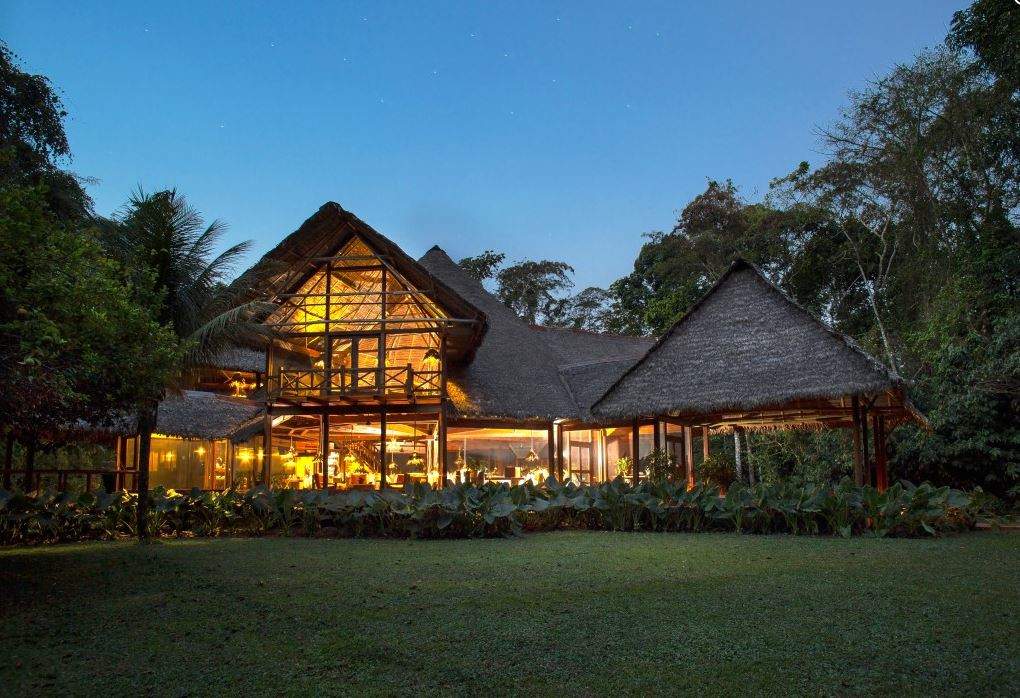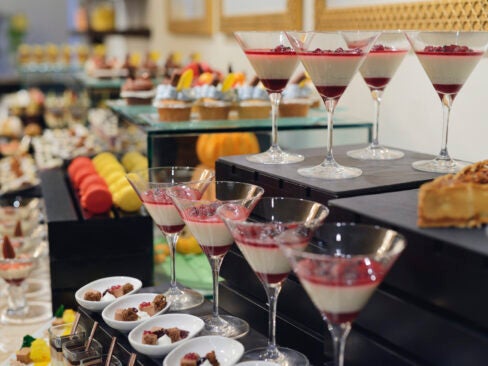Each of these outstanding hotels combines the ultimate in luxury and style with sustainability and a respect for the area of natural beauty it’s in.
Six Senses Zil Pasyon Félicité, Seychelles
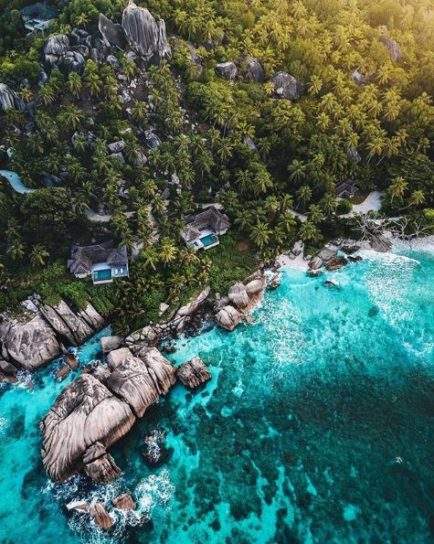 The rehabilitation of an entire island’s natural habitat is the ambitious project surrounding this recently opened resort by Six Senses. From the granite boulders and white sand shores the Seychelles is known for, endemic rain forest clings to the granite slopes with a wealth of indigenous plants and birdlife, thanks to the eradication of invasive plant species that took the island over many decades ago. In this wild and beautiful setting, a collection of sustainably built pool villas and residences sit on the hillside overlooking the turquoise ocean, giving you the feeling of being immersed in the verdant surroundings with the luxury of your own sundeck and plunge pool. Especially unique to the setting is the resort’s striking spa, which is dramatically built between colossal boulders, with African-inspired treatments drawing on the natural resources of the island. Gain insight into the island’s environmental projects by hiking through the forest with an expert guide, snorkeling offshore and looking out for the turtles that nest here.
The rehabilitation of an entire island’s natural habitat is the ambitious project surrounding this recently opened resort by Six Senses. From the granite boulders and white sand shores the Seychelles is known for, endemic rain forest clings to the granite slopes with a wealth of indigenous plants and birdlife, thanks to the eradication of invasive plant species that took the island over many decades ago. In this wild and beautiful setting, a collection of sustainably built pool villas and residences sit on the hillside overlooking the turquoise ocean, giving you the feeling of being immersed in the verdant surroundings with the luxury of your own sundeck and plunge pool. Especially unique to the setting is the resort’s striking spa, which is dramatically built between colossal boulders, with African-inspired treatments drawing on the natural resources of the island. Gain insight into the island’s environmental projects by hiking through the forest with an expert guide, snorkeling offshore and looking out for the turtles that nest here.
sixsenses.com/resorts/zilpasyon
Limalimo Lodge Simien Mountains, Ethiopia
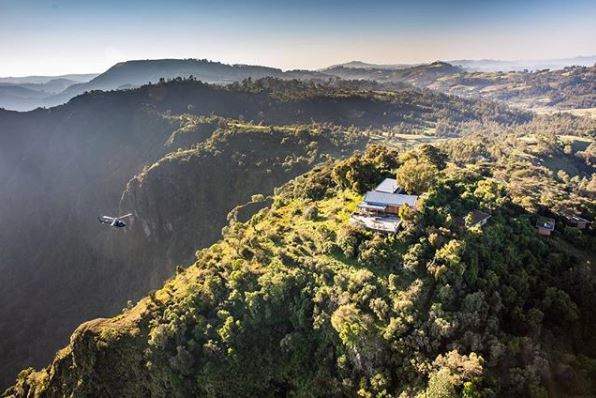 Positioned amid the jagged peaks and deep valleys of Unesco-listed Simien Mountains National Park, Limalimo Lodge sits within a landscape that’s home to an abundance of unique wildlife, from hyenas and leopards to endemic species such as the Walia Ibex horned mountain goat, Ethiopian wolf and Gelada monkey. As well as planting hundreds of indigenous trees in the lodge’s ground, Limalimo has established a series of conservation and education programs here, while also developing a conservation fund in which some of the hotel’s profits go towards local initiatives. On top of this, Limalimo minimizes waste, recycles water and uses solar power, as well as using local produce in its cuisine and hiring staff from the local community. All of this differentiates the experience you have here, whether you’re trekking with a local guide, taking part in an Ethiopian coffee ceremony or having breakfast overlooking the escarpment.
Positioned amid the jagged peaks and deep valleys of Unesco-listed Simien Mountains National Park, Limalimo Lodge sits within a landscape that’s home to an abundance of unique wildlife, from hyenas and leopards to endemic species such as the Walia Ibex horned mountain goat, Ethiopian wolf and Gelada monkey. As well as planting hundreds of indigenous trees in the lodge’s ground, Limalimo has established a series of conservation and education programs here, while also developing a conservation fund in which some of the hotel’s profits go towards local initiatives. On top of this, Limalimo minimizes waste, recycles water and uses solar power, as well as using local produce in its cuisine and hiring staff from the local community. All of this differentiates the experience you have here, whether you’re trekking with a local guide, taking part in an Ethiopian coffee ceremony or having breakfast overlooking the escarpment.
Inkaterra Reserva Amazonica The Amazon, Peru
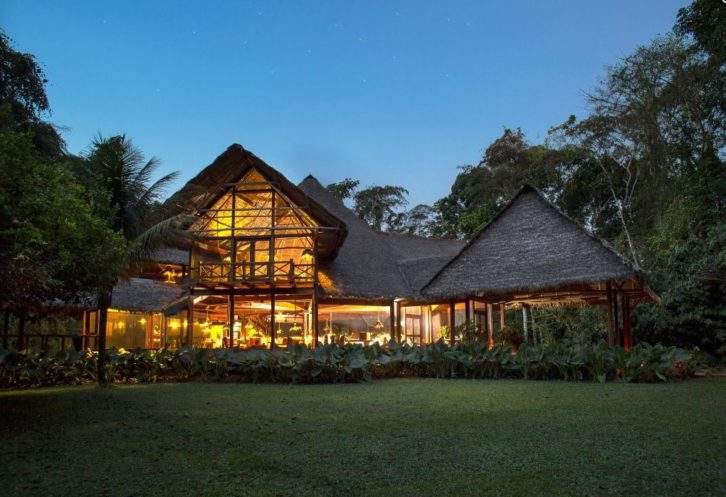 Inkaterra founder Jose Koechlin is considered the pioneer of ecotourism in Peru, having gone from telling people about the country’s culture and environment through film-making to opening his own lodge (the first of many) in the Amazon’s Madre de Dios rain forest. Constructed using native materials, with a design inspired by the local Ese’Eja culture, the lodge was set up to combine environmental efforts with tourism, and since then sustainable tourism has flourished here. The use of natural resources enriches the experience you have at the lodge, with excursions based around conservation projects. Walk along Inkaterra’s 30-meter-high canopy walkway, hike along rain forest trails and spot wildlife from a boat on the river. Meals integrate ingredients from the Amazon, as do the treatments at ENA Spa.
Inkaterra founder Jose Koechlin is considered the pioneer of ecotourism in Peru, having gone from telling people about the country’s culture and environment through film-making to opening his own lodge (the first of many) in the Amazon’s Madre de Dios rain forest. Constructed using native materials, with a design inspired by the local Ese’Eja culture, the lodge was set up to combine environmental efforts with tourism, and since then sustainable tourism has flourished here. The use of natural resources enriches the experience you have at the lodge, with excursions based around conservation projects. Walk along Inkaterra’s 30-meter-high canopy walkway, hike along rain forest trails and spot wildlife from a boat on the river. Meals integrate ingredients from the Amazon, as do the treatments at ENA Spa.
Whitepod Valais, Switzerland
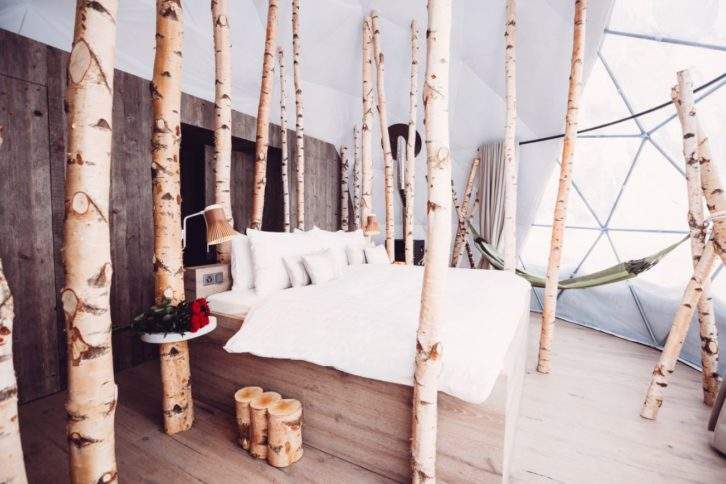 Aiming to prove conservation and hospitality can come together in harmony, Whitepod established an eco-resort in which energy is kept to a minimum, water is recycled, ingredients for the restaurant are sourced locally and staff arrive on foot. The resort’s luxury pods sit on the slopes of Valais in Switzerland, facing the ski resort Villars, with interiors as luxurious as those you’d see in a hotel. At Restaurant Les Cerniers you’ll enjoy hearty dishes such as slow cooked lamb shank with market vegetables and a wild thyme jus, in the cozy dining room of the Alpine chalet. And when you’re not sampling the local cuisine, you can make the most of your stay by relaxing with a massage in the wellness area and setting out into the mountains, whether hiking and mountain biking in the summer or skiing and sledging in the winter.
Aiming to prove conservation and hospitality can come together in harmony, Whitepod established an eco-resort in which energy is kept to a minimum, water is recycled, ingredients for the restaurant are sourced locally and staff arrive on foot. The resort’s luxury pods sit on the slopes of Valais in Switzerland, facing the ski resort Villars, with interiors as luxurious as those you’d see in a hotel. At Restaurant Les Cerniers you’ll enjoy hearty dishes such as slow cooked lamb shank with market vegetables and a wild thyme jus, in the cozy dining room of the Alpine chalet. And when you’re not sampling the local cuisine, you can make the most of your stay by relaxing with a massage in the wellness area and setting out into the mountains, whether hiking and mountain biking in the summer or skiing and sledging in the winter.
Calistoga Ranch, an Auberge Resort Napa Valley, USA
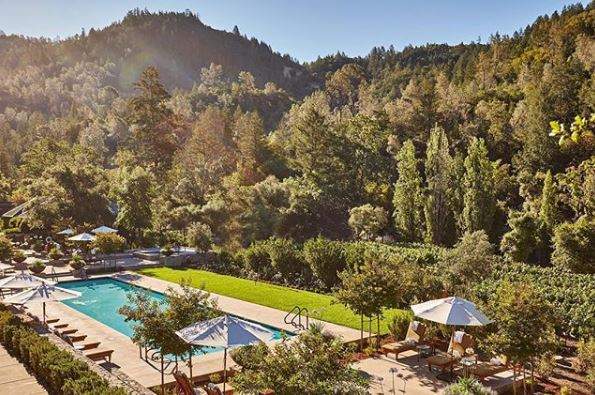 In addition to being designed to preserve energy and water, and minimize waste, this Napa Valley resort leads a series of environmental initiatives, and cultivates an organic garden for use in the restaurant’s kitchen. The ranch is situated in the Upper Napa Valley on its own 157-acre patch of land. In this setting the resort promotes indoor-outdoor living, with luxury lodges featuring outdoor decks, hot tubs and double-sided indoor-outdoor fireplaces. From here, you can get to know the surroundings by taking a guided hike, setting out on a tour of local vineyards and talking to the resident beekeeper about the role these creatures play at Calistoga Ranch. The Lakehouse restaurant is a highlight of any stay, with organic, natural and seasonal ingredients used in Napa Valley-inspired dishes paired with local wine. Try the grilled Bodega Bay wild salmon with whole wheat berries and sautéed swiss chard, or house-made tagliatelle pasta with hen-of-the-woods mushroom, asparagus, thyme and lemon.
In addition to being designed to preserve energy and water, and minimize waste, this Napa Valley resort leads a series of environmental initiatives, and cultivates an organic garden for use in the restaurant’s kitchen. The ranch is situated in the Upper Napa Valley on its own 157-acre patch of land. In this setting the resort promotes indoor-outdoor living, with luxury lodges featuring outdoor decks, hot tubs and double-sided indoor-outdoor fireplaces. From here, you can get to know the surroundings by taking a guided hike, setting out on a tour of local vineyards and talking to the resident beekeeper about the role these creatures play at Calistoga Ranch. The Lakehouse restaurant is a highlight of any stay, with organic, natural and seasonal ingredients used in Napa Valley-inspired dishes paired with local wine. Try the grilled Bodega Bay wild salmon with whole wheat berries and sautéed swiss chard, or house-made tagliatelle pasta with hen-of-the-woods mushroom, asparagus, thyme and lemon.
calistogaranch.aubergeresorts.com
Saffire Freycinet Tasmania, Australia
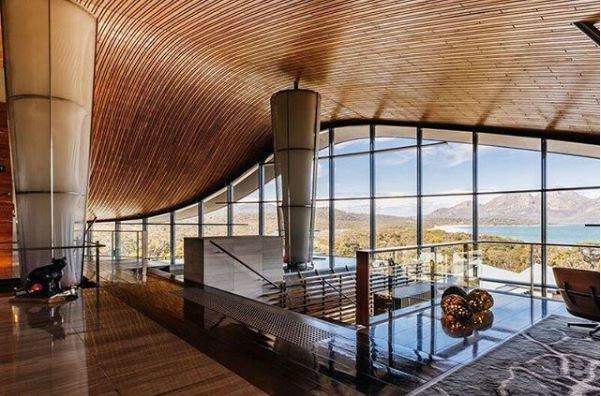 Saffire Freycinet sits on the secluded shores of Tasmania’s southeast peninsula, an area of protected land that encompasses the famous coastal stretch Wineglass Bay. The lodge has a privileged position here, overlooking Great Oyster Bay where fishermen bring in their daily catch of scallops and rock lobster, oysters are farmed in remarkably clean water and whales and dolphins can be seen passing through on their migration route. In addition to benefiting the area by planting 30,000 native plants, the hotel aims to have minimal impact on the environment through energy efficiency and water solutions. With this is mind, the contemporary, glass-sided building was built to make the most of its views while flooding the expansive suites with light. The restaurant exemplifies the lodge’s connection to its surroundings, with ingredients sourced from local fishermen and farms, along with oysters from the bay and wine from local vineyards, and the experiences offered are based around the environment too; visit local wineries and the nearby oyster farm, take a canoe out in Pelican Bay and sign up for the Tasmanian devil experience in which you’ll find out about the conservation efforts dedicated to this unique species.
Saffire Freycinet sits on the secluded shores of Tasmania’s southeast peninsula, an area of protected land that encompasses the famous coastal stretch Wineglass Bay. The lodge has a privileged position here, overlooking Great Oyster Bay where fishermen bring in their daily catch of scallops and rock lobster, oysters are farmed in remarkably clean water and whales and dolphins can be seen passing through on their migration route. In addition to benefiting the area by planting 30,000 native plants, the hotel aims to have minimal impact on the environment through energy efficiency and water solutions. With this is mind, the contemporary, glass-sided building was built to make the most of its views while flooding the expansive suites with light. The restaurant exemplifies the lodge’s connection to its surroundings, with ingredients sourced from local fishermen and farms, along with oysters from the bay and wine from local vineyards, and the experiences offered are based around the environment too; visit local wineries and the nearby oyster farm, take a canoe out in Pelican Bay and sign up for the Tasmanian devil experience in which you’ll find out about the conservation efforts dedicated to this unique species.
Singita Grumeti The Serengeti, Tanzania
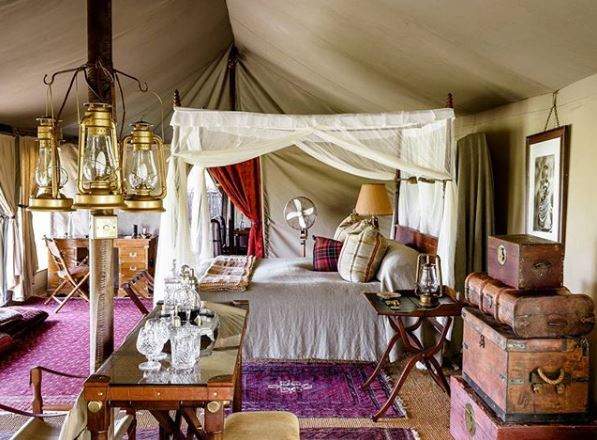 As the Grumeti foundation was established in 2003 (the foundation partnered with Singita, making it The Singita Grumeti Fund, three years later to give the initiative a global stage), this year marks the 15-year anniversary of these conservation efforts. Since the fund was established, wildlife numbers in this 350,000-acre concession of the Serengeti have increased four-fold, with species such as lions, elephants and buffalo continuing to thrive. To see the results of this achievement, set out on a journey between the lodges and camps within the reserve, from the private-use retreat Serengeti House to the ultra-stylish Faru Faru Lodge, Edwardian manor house Sasakwa Lodge and intimate Sabora Tented Camp. Combining opulence and style with these exhilarating surroundings, the lodges appeal to anyone with an adventurous spirit and love for the natural world.
As the Grumeti foundation was established in 2003 (the foundation partnered with Singita, making it The Singita Grumeti Fund, three years later to give the initiative a global stage), this year marks the 15-year anniversary of these conservation efforts. Since the fund was established, wildlife numbers in this 350,000-acre concession of the Serengeti have increased four-fold, with species such as lions, elephants and buffalo continuing to thrive. To see the results of this achievement, set out on a journey between the lodges and camps within the reserve, from the private-use retreat Serengeti House to the ultra-stylish Faru Faru Lodge, Edwardian manor house Sasakwa Lodge and intimate Sabora Tented Camp. Combining opulence and style with these exhilarating surroundings, the lodges appeal to anyone with an adventurous spirit and love for the natural world.
singita.com/region/singita-grumeti
Soneva Jani Noonu Atoll, Maldives
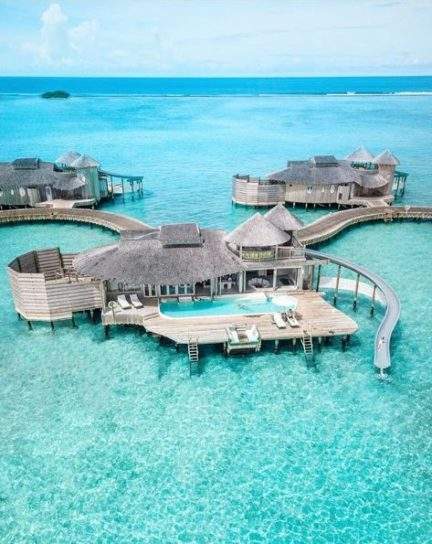 Following on from the successful creation of sustainable resorts Soneva Fushi and Soneva Kiri, the resort brand opened Soneva Jani, a private island resort based on the same environmental principles, using sustainable wood for each villa’s construction and integrating a state-of-the-art Eco Centro waste management system into the resort, along with organic vegetable gardens. In addition to this, Soneva Jani has launched its own sustainable experiences such as eco-friendly surfing, along with snorkeling, castaway picnics, stargazing and dolphin watching. A variety of dining experiences are curated here – some of the most special include a full moon dinner on the sandbar of Baraveli Beach and private dinner in the wine cellar stocked with organic and biodynamic wines.
Following on from the successful creation of sustainable resorts Soneva Fushi and Soneva Kiri, the resort brand opened Soneva Jani, a private island resort based on the same environmental principles, using sustainable wood for each villa’s construction and integrating a state-of-the-art Eco Centro waste management system into the resort, along with organic vegetable gardens. In addition to this, Soneva Jani has launched its own sustainable experiences such as eco-friendly surfing, along with snorkeling, castaway picnics, stargazing and dolphin watching. A variety of dining experiences are curated here – some of the most special include a full moon dinner on the sandbar of Baraveli Beach and private dinner in the wine cellar stocked with organic and biodynamic wines.





